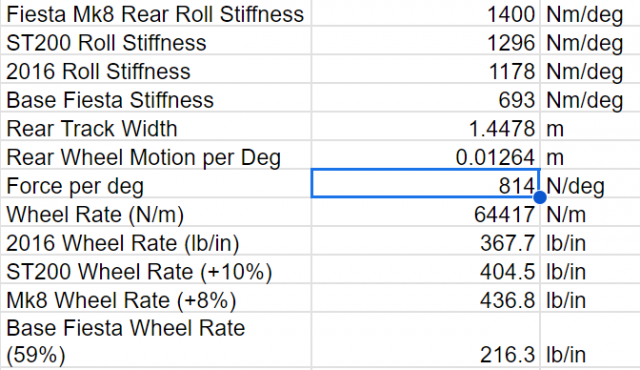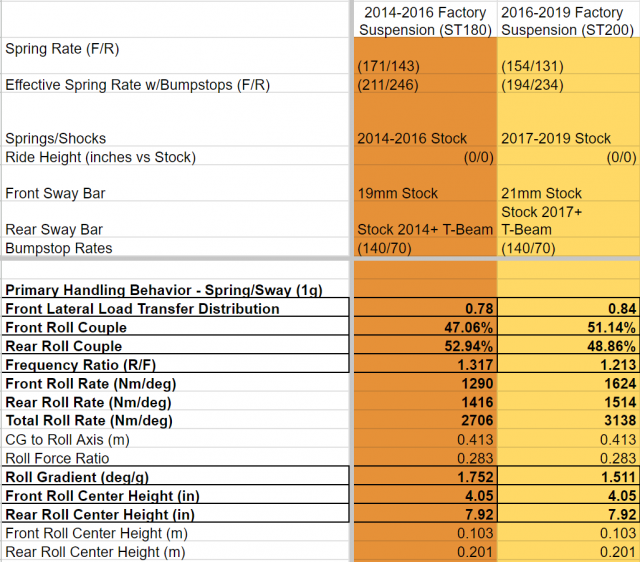This is a cool reference and is interesting though according to Ford themselves if I recall correctly our rear beams on late MK 7.5 are actually 30 percent stiffer not 10% like you calculated . Also the front sway went from a 19mm to a 21mm which is easily a 30% stiffer bar as well and this was in direct relation to softening of the dampers and springs for the sake of ride comfort after numerous complaints of stiff ride on both sides of the pond. So ya I question the 10% calculation. That seems drastically minimal on Fords part especially when they upped the original beam from the base Fiesta by 70% by your calculations.
I'm not 100% sure of the 10% rear as I've found different articles saying different things about the ST200 changes - specifically the torsion beam at 10%, 27% and 33% and none that seem to agree. In either case it "softened" up the car a bit. Softer springs, stiffer sway bars, Net effect being less harsh ride with less body roll and slightly tamed (but still present) liftoff oversteer - the earlier cars are more stiffly sprung and a bit more tail happy, but with slightly more overall body roll.
I found "27%" from a "Ford media" article here, so I may need to review my numbers (the 10% might be "overall" increase in the rear):
https://media.ford.com/content/ford...hatch-arrives-in-europe--fiesta-st200-di.html
Also, reading carefully the "1400 Nm/deg" claims for the Mk8, I'm not actually seeing anywhere where Ford is claiming an increase over the previous generation...
https://media.ford.com/content/ford...ffers-limited-slip-differential-and-debu.html
Either way I might need to revise my numbers slightly
Keep in mind that roll stiffness as it affects understeer/oversteer is also influenced by weight distribution - with 60% of the weight on the front axle, adding roll stiffness in the front has less effect, and sway bars only tell part of the story
Once you put the "whole package" together it kind of makes sense - attached below is what I come up accounting for springs, sway bars and also weight distribution as well as roll centers and cg height.
"Front Lateral Load Transfer Distribution" is the most informative here - basically the ratio of front/rear roll stiffness compared to front/rear axle weight distribution. There are error bars here, but generally, FLLTD between 0.9 and 1.1 is a more or less "neutral" setup. Less than 0.9 is steady state oversteer, and greater than 1.1 is steady state understeer. All cars also have a tendency under liftoff to unload the rear axle, resulting in "liftoff oversteer"
What I come up with for the stock setup is ~0.79 for the early cars, and 0.84 for the ST200 - both still in the realm of "mild" oversteer and a fairly subtle difference in behavior between the two. Popping a stiff rear sway bar on either version brings you down to 0.7 or lower, into the realm of fairly notable oversteer bias which some people like and some people don't. In no case do most spring and sway bar adjustments result in actual steady state understeer, with the exception of throwing on a big honking 25mm front sway bar.


